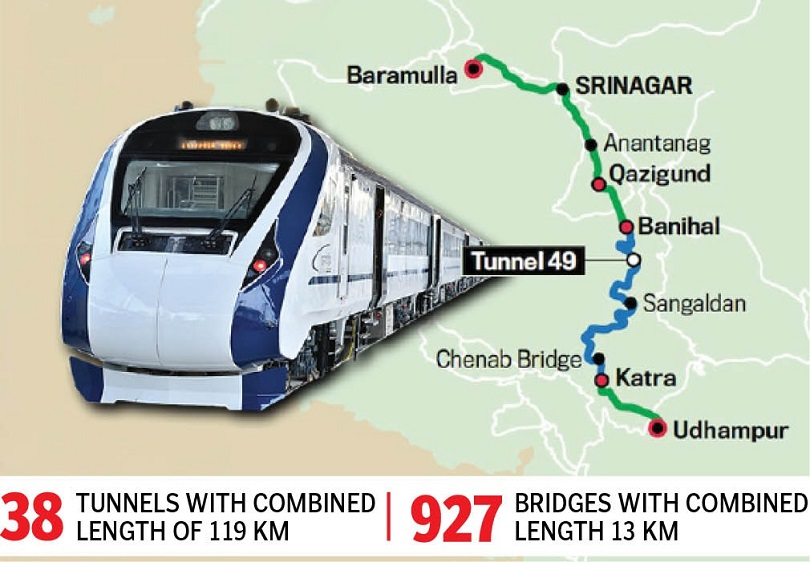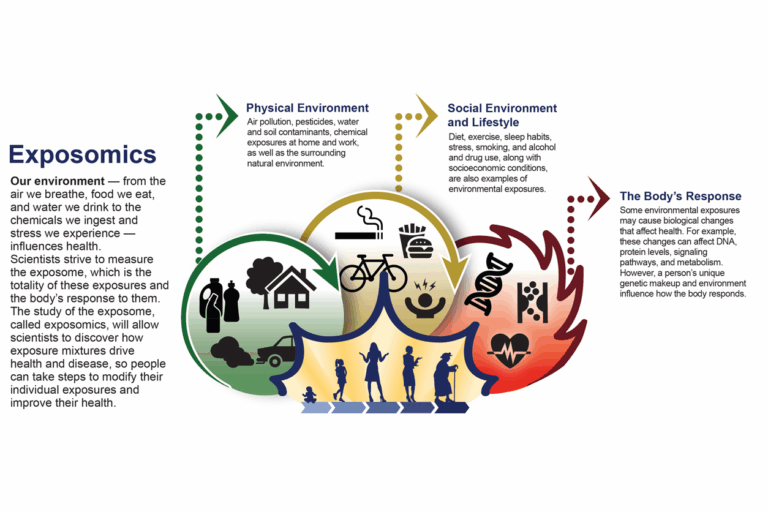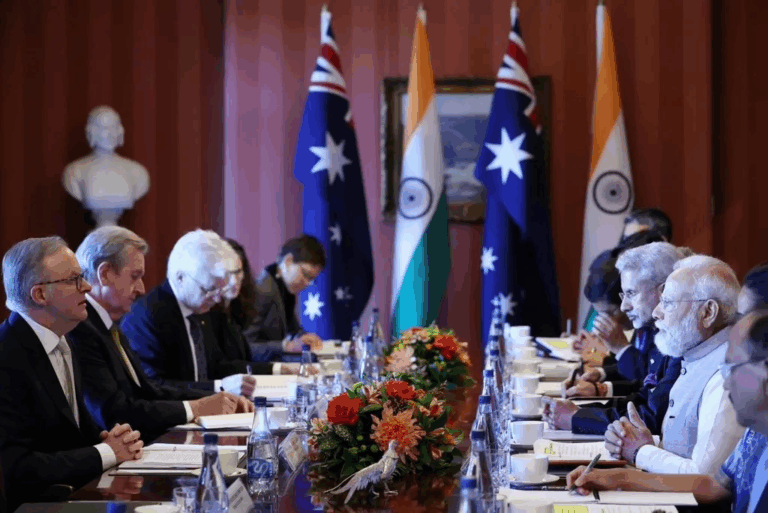Bridging the Valley: Inauguration of Kashmir’s First All-Weather Rail Link with Delhi
Why in the News?
On June 6, 2025, Prime Minister Narendra Modi inaugurated Jammu and Kashmir’s first all-weather rail link with Delhi, marking the operationalisation of the Udhampur-Srinagar-Baramulla Rail Link (USBRL) and launching Vande Bharat Express services between Shri Mata Vaishno Devi Katra and Srinagar.

This also includes the formal unveiling of engineering marvels like the Chenab Rail Bridge (the world’s highest railway arch bridge) and the Anji Khad Bridge (India’s first cable-stayed rail bridge). The project aims to enhance connectivity, boost tourism, and strengthen socio-economic integration of the Kashmir Valley with the rest of India.
Background
- Historical Disconnection: Due to challenging Himalayan terrain and political sensitivities, Jammu and Kashmir lacked rail connectivity with the rest of the country. Travellers were dependent on roads and airways, both vulnerable to weather and disruptions.
- USBRL Project Initiation: Launched in 1994, the Udhampur–Srinagar–Baramulla Rail Link (USBRL) was conceived to connect the Kashmir Valley with the Indian Railways’ mainline network. The ₹46,000 crore project was split into multiple legs, including Udhampur–Katra, Katra–Banihal, Banihal–Qazigund, and Qazigund – Baramulla.

Key Components Completed:
- Qazigund–Baramulla (2009)
- Banihal–Qazigund tunnel (11.2 km) in 2013
- Udhampur–Katra in 2014
- Katra–Banihal section, including major bridges, completed in 2024–25
Key Features of the Project
- Strategic Infrastructure
- Chenab Bridge:
- Height: 359 meters above the riverbed (35 m higher than the Eiffel Tower)
- Cost: ₹1,486 crore
- The world’s highest railway arch bridge
- Wind resistance: up to 260 km/h
- Length: 1,315 meters
- Anji Khad Bridge:
- India’s first cable-stayed railway bridge
- Height: 331 meters
- Length: 725 meters, with a 193-metre tall inverted Y-shaped pylon
Features 96 high-tensile cables
Vande Bharat Express Service
- Inaugural services: From June 7, 2025
- Two pairs of trains: 26404/26403 and 26401/26402
- Route: Srinagar–Banihal-Katra
- Frequency: 6 days/week (excluding Wednesday)
- Journey Time: ~3 hours between Srinagar and Katra
Connectivity and Integration
All-weather access: Overcomes frequent highway blockages and air fare surges during snowfall or conflict
- Spiritual tourism: Facilitates pilgrims to the Vaishno Devi shrine
- Agricultural boost: Quicker transport of horticulture produce like apples and cherries
- Economic development: Job creation and better market access in remote areas
Engineering Feat
- Over 38 tunnels and 900 bridges
- Highly seismic and difficult Himalayan terrain
- Use of modern tunnelling technologies like the New Austrian Tunnelling Method (NATM)
Challenges
Security Risks
- Ongoing militancy in the Valley increases the risk to infrastructure and passengers.
- Prime Minister’s visit marked the first after the Pahalgam terror attack, indicating underlying tension.
Environmental Sensitivity
- Large-scale tunnelling and blasting could disturb the fragile Himalayan ecology, leading to landslides, water disruption, or biodiversity loss.
Cost and Time Overruns
- Initial estimates (₹2,500 crore) ballooned to ₹46,000 crore.
- Delays of over two decades due to terrain, security, and administrative bottlenecks.
Operational Challenges
- Harsh winters and snow accumulation in the Banihal region
- Ensuring reliable year-round operations despite potential weather-related and geological hazards
Way Forward
Strengthening Security and Surveillance
- Use of drone surveillance, smart fencing, and CRPF deployment must continue.
- Coordination with local intelligence for preemptive risk mitigation.
Promoting Regional Development
- Focus on logistics hubs, cold storage chains, and agri-export clusters along the route.
- Empowering local businesses and artisans through better access to national markets.
Tourism-Led Growth
- Promoting eco-tourism and heritage tourism in areas like Baramulla, Pahalgam, and Gulmarg.
- Special tourist coaches, winter holiday packages, and rail-tourism circuits can be launched.
Environmental Auditing
- Continuous monitoring of land stability, forest impact, and water tables must be instituted.
- Compensation and resettlement for any environmental damage to affected communities.
Integration with National Rail Grid
- Early completion of Srinagar–Delhi direct services (by September 2025).
- Integration with freight corridors and the Delhi–Amritsar–Katra semi-high-speed corridor for long-term growth.
Conclusion
The inauguration of Kashmir’s first all-weather rail link is a historic turning point in India’s efforts to integrate its northernmost region. Beyond connectivity, it represents a message of nation-building, inclusion, and infrastructure resilience. While challenges remain – ranging from security to ecological balance- the USBRL project demonstrates how vision, engineering, and persistence can overcome natural and manmade barriers. As the trains begin to roll, a new chapter begins in the journey of economic revival and emotional integration of the Kashmir Valley with the rest of India.
MAINS PRACTICE QUESTION
Question: The operationalisation of the Udhampur–Srinagar–Baramulla Rail Link (USBRL) marks a watershed in the integration of Jammu & Kashmir with the rest of India. Critically examine the strategic, economic, and environmental implications of this all-weather rail connectivity. In your opinion, what should be the priorities in ensuring its long-term success? (250 words, 15 marks)
PRELIMS PRACTICE QUESTION
Question: About the Udhampur–Srinagar–Baramulla Rail Link (USBRL), consider the following statements:
- 1. The Chenab Bridge, a part of USBRL, is higher than the Eiffel Tower.
- 2. The Anji Khad Bridge is India’s first arch bridge on a railway line.
- 3. The Banihal-Qazigund tunnel, a key component of the USBRL, is more than 11 km long.
- 4. The Vande Bharat Express between Katra and Srinagar is India’s first semi-high-speed train in mountainous terrain.







